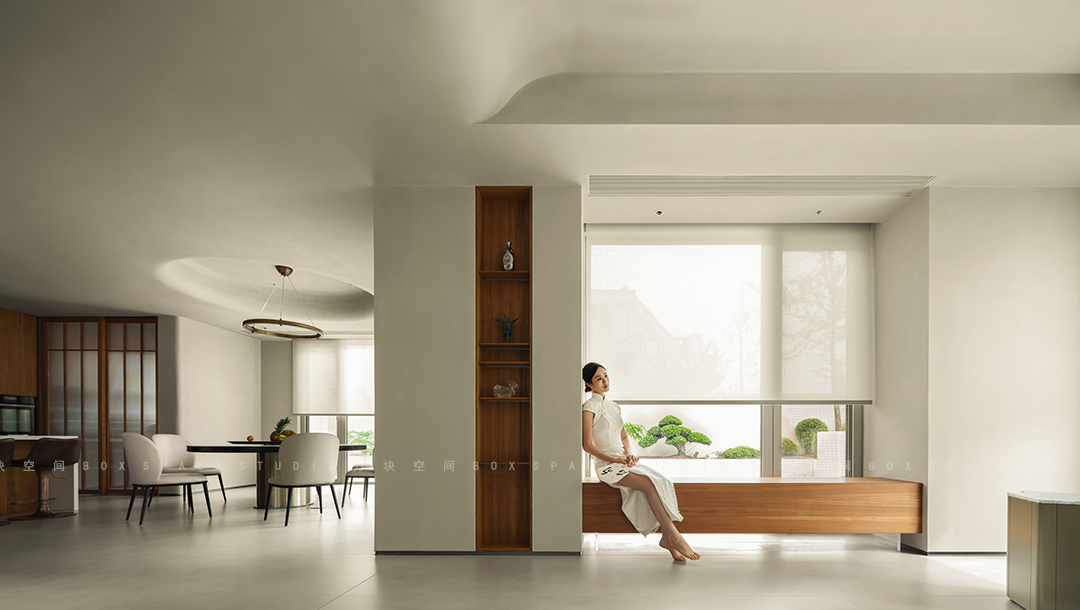Times Eureka Pavilion Nex Architecture
2011-06-12 00:00
架构师提供的文本描述。NEX很高兴在今年的RHS切尔西花展上为创造综合设计基准做出贡献,与Buro Happold和切尔西金奖得主马库斯·巴尼特合作,与英国皇家植物园(RoyalBotanic Gardens,Kew)合作,为泰晤士报尤里卡花园(Times Eureka Garden)创建一个展馆。
Text description provided by the architects. NEX was delighted to contribute to creating a benchmark in integrated design at this year’s RHS Chelsea Flower Show, working with Buro Happold and Chelsea Gold Medallist Marcus Barnett on the creation of a pavilion for The Times Eureka Garden, in association with the Royal Botanic Gardens, Kew.
“泰晤士报”委托马库斯·巴尼特景观建筑师设计和建造这座花园,展示了对科学的承诺,并反映了“泰晤士报”科学月刊“尤里卡”的重点。巴内特要求获奖的NEX建筑设计尤里卡展馆,并任命Buro Happold提供结构工程。为尤里卡花园选择的植物种类反映了它们对社会的益处,包括医药、商业和工业用途,这说明没有它们我们是无法生存的。展馆的设计简略是为了反映同样的主题。
The Times commissioned Marcus Barnett Landscape Architects to design and build the garden, demonstrating a commitment to science and reflecting the focus of The Times monthly science magazine, Eureka. Barnett asked award winning NEX Architecture to design the Eureka Pavilion, and appointed Buro Happold to provide structural engineering. Plant species chosen for the Eureka Garden reflect their benefits to society including medicinal, commercial and industrial uses underlining the fact we could not survive without them. The pavilion design brief was to reflect the same theme.
NEX校长艾伦·邓普西(AlanDempsey)说:“我们通过仔细观察植物的细胞结构及其生长过程来扩展花园的设计概念,从而为设计的发展提供信息。最后的结构是利用模拟自然生长的计算机算法设计的,目的是让游客在不熟悉的尺度上体验生物结构的模式。主要结构是来自可持续云杉森林的木材,有玻璃镶板屋顶。“
NEX Principal Alan Dempsey says: “We extended the design concepts of the garden by looking closely at the cellular structure of plants and their processes of growth to inform the design’s development. The final structure was designed using computer algorithms that mimic natural growth and is intended to allow visitors to experience the patterns of biological structure at an unfamiliar scale. The primary structure is timber sourced from sustainable spruce forests with a glass panelled roof.”
Courtesy of nex architecture
展馆的设计发展集中在壁上嵌有叶毛细血管的“生物模拟”。结构几何学的最终确定使用初级木材毛细血管(300 Dpx140wd),形成展馆的基本形状和支撑结构,内嵌有容纳包层的次级木盒。在完成三维造型以满足建筑和结构需要后,木材专业制造者对结构进行了详细分析和数字化制造。
The design development of the pavilion focused on the ‘bio-mimicry’ of leaf capillaries being embedded in the walls. The structural geometry was finalised to use primary timber capillaries (300dp x 140wd) to form the basic shape and supporting structure of the pavilion, inset with secondary timber cassettes that hold the cladding. Following completion of the 3D modelling to meet architectural and structural needs, specialist timber fabricators undertook detailed analysis and digital manufacturing of the structure.
墙壁和屋顶上覆盖着可循环利用的塑料“细胞”,可以看到花园的景致。雨水从屋顶向下流过立方体墙上的毛细血管进入地面。展馆坐落在由云杉梁建造的木筏上。沙压载填补了木筏之间的空隙,给展馆增加了重量,以抵抗风荷载的抬升。
The walls and roof are clad with recycled plastic ‘cells’ that frame views out to the garden. Rain water literally runs down the capillaries in the walls of the cube from the roof into the ground. The pavilion sits on a timber raft constructed from spruce beams. Sand ballast fills the voids between the raft timbers to give the pavilion increased weight to resist uplift from wind loads.
Courtesy of nex architecture
在这座建筑被拆除并运至位于Kew的皇家植物园(Royal植物园)后,地面上什么也不会留下。在这里,它将与泰晤士报尤里卡花园(Times Eureka Garden)的其他部分一起建起来,背景是韩国经济研究所(Kew)历史上的联合国教科文组织(希望这座花园能在7月初向公众开放,供夏季使用。
Nothing will remain in the ground after the structure is dismantled and transported to the Royal Botanical Gardens at Kew where it will be erected along with the rest of the Times Eureka Garden, against the backdrop of Kew’s historical UNESCO World Heritage Site landscape. It is hoped the garden will be open to the public in early July for the summer months.
 举报
举报
别默默的看了,快登录帮我评论一下吧!:)
注册
登录
更多评论
相关文章
-

描边风设计中,最容易犯的8种问题分析
2018年走过了四分之一,LOGO设计趋势也清晰了LOGO设计
-

描边风设计中,最容易犯的8种问题分析
2018年走过了四分之一,LOGO设计趋势也清晰了LOGO设计
-

描边风设计中,最容易犯的8种问题分析
2018年走过了四分之一,LOGO设计趋势也清晰了LOGO设计






























































